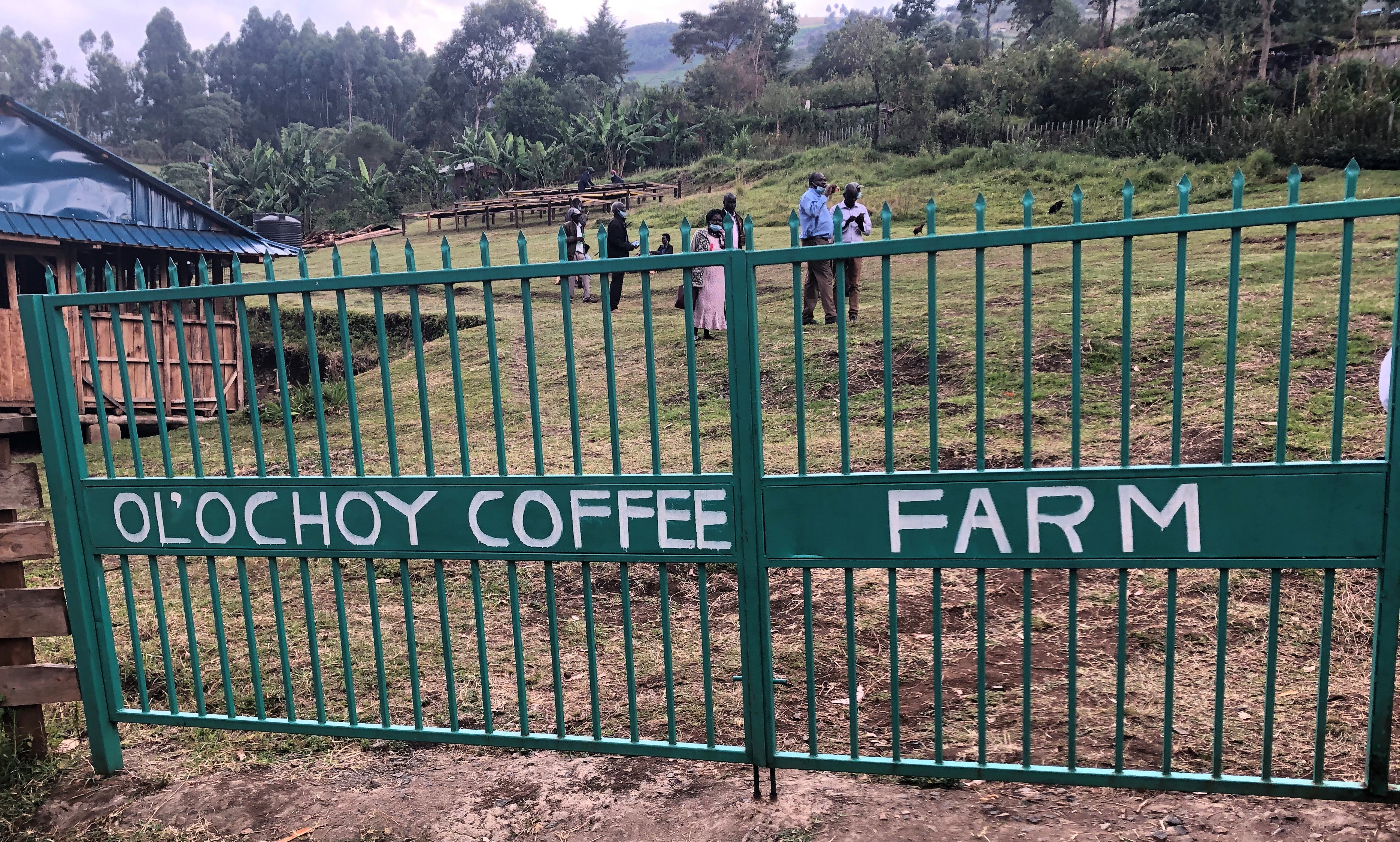Letzter Beitrag
Stichworte

Ol’ochoy Farm – From coffee cherry picking, to the drying process
Steffen Sauer
Mar 14, 2021
After visiting the Kiptebes Society we were visiting the Ol'ochoy farm from Paul Lilan. The way to get there was almost as interesting as taking the motor bike 😉

With the example of the Ol’ochoy Farm I will share more insights regarding the process from picking to the preparation for the dry mill. Let me give you a short overview of the process here:

Everything starts with the harvest, picking the ripe coffee cherries from the tree. Only cherries with the perfect red color get picked, neither the unripe green ones, nor the overripe black ones. Green cherries contain underdeveloped acids and not a complete flavor profile while black cherries taste fermented. The timing of the harvest strongly depends on the geographical and climate conditions and will thus vary by region and altitude. We had the chance to experience this process ourselves.

Detailed information regarding the harvest you can find in our blog post "The Coffee Harvest"
After the coffee cherries are picked, the cherries get sorted to avoid processing over- or underripe cherries. At the Ol’ochoy farm (and usually the common approach across Kenya) the washed process is applied (though we also saw natural processed coffee during day 5 of our trip – more later).



The dried cherries are then stored in bulk in special silos until they are sent to the dry mill where hulling, sorting, grading, and packaging will take place.


After we spent the afternoon learning about every step of the process from picking to preparing for the dry mill, we also got the chance to plant our own coffee tree. As sustainability is one of our core values at Ulinzi Conservation Coffee (please remember we donate 5 seedlings for reforestation purposes per sold coffee product) - you don’t have to ask me twice!

I will be back next year to check on the progress of my coffee tree! The visit of the Ol’ochoy farm was very special for me, as Paul is one of the farmers, I bought coffee from – so of course I also asked for a picture with him and his wife.

Our next blog post will be about our visit of the Lion Hill Coffee plant nursery and farm. You will get the chance to learn about the different coffee varieties.



